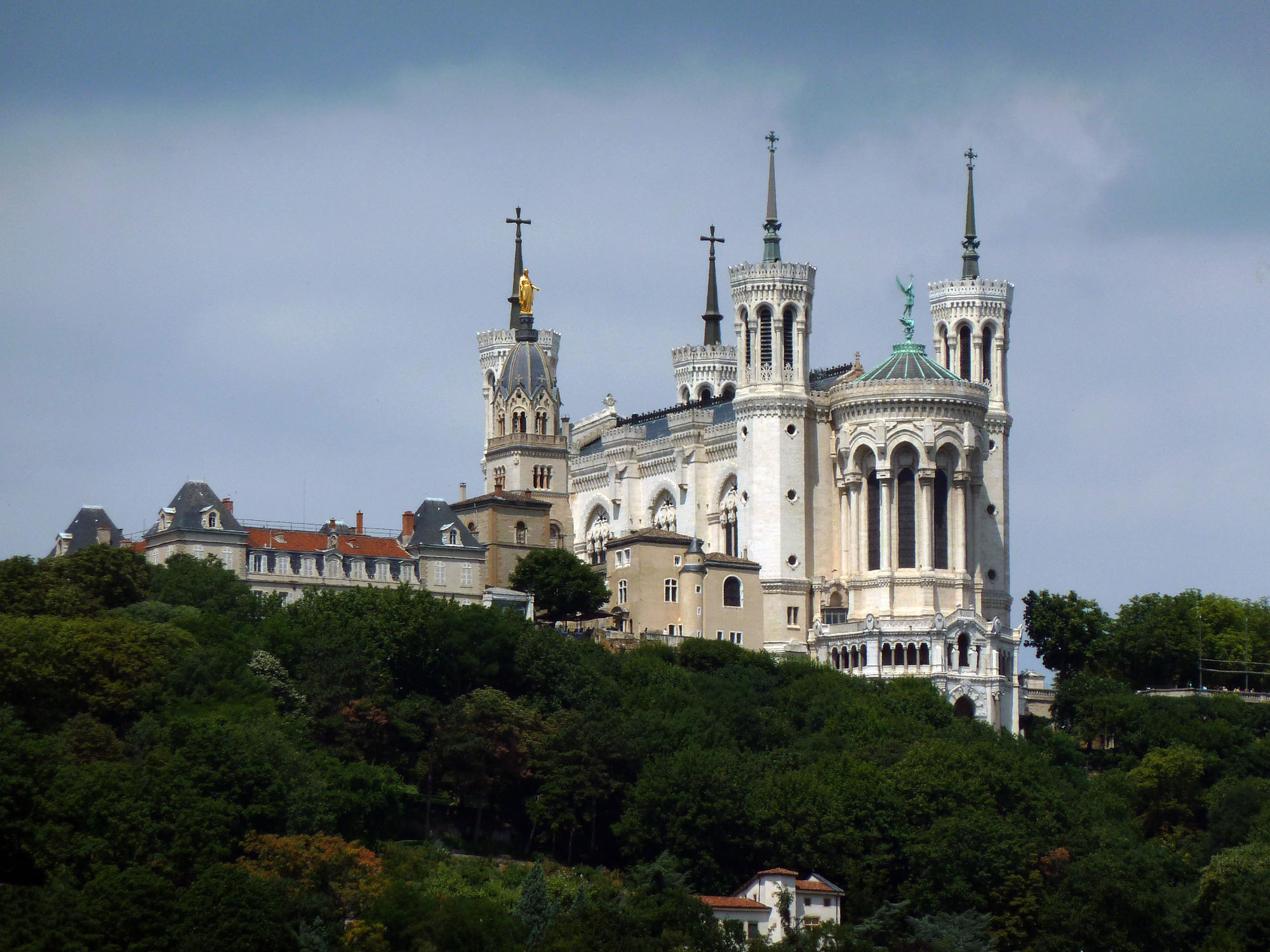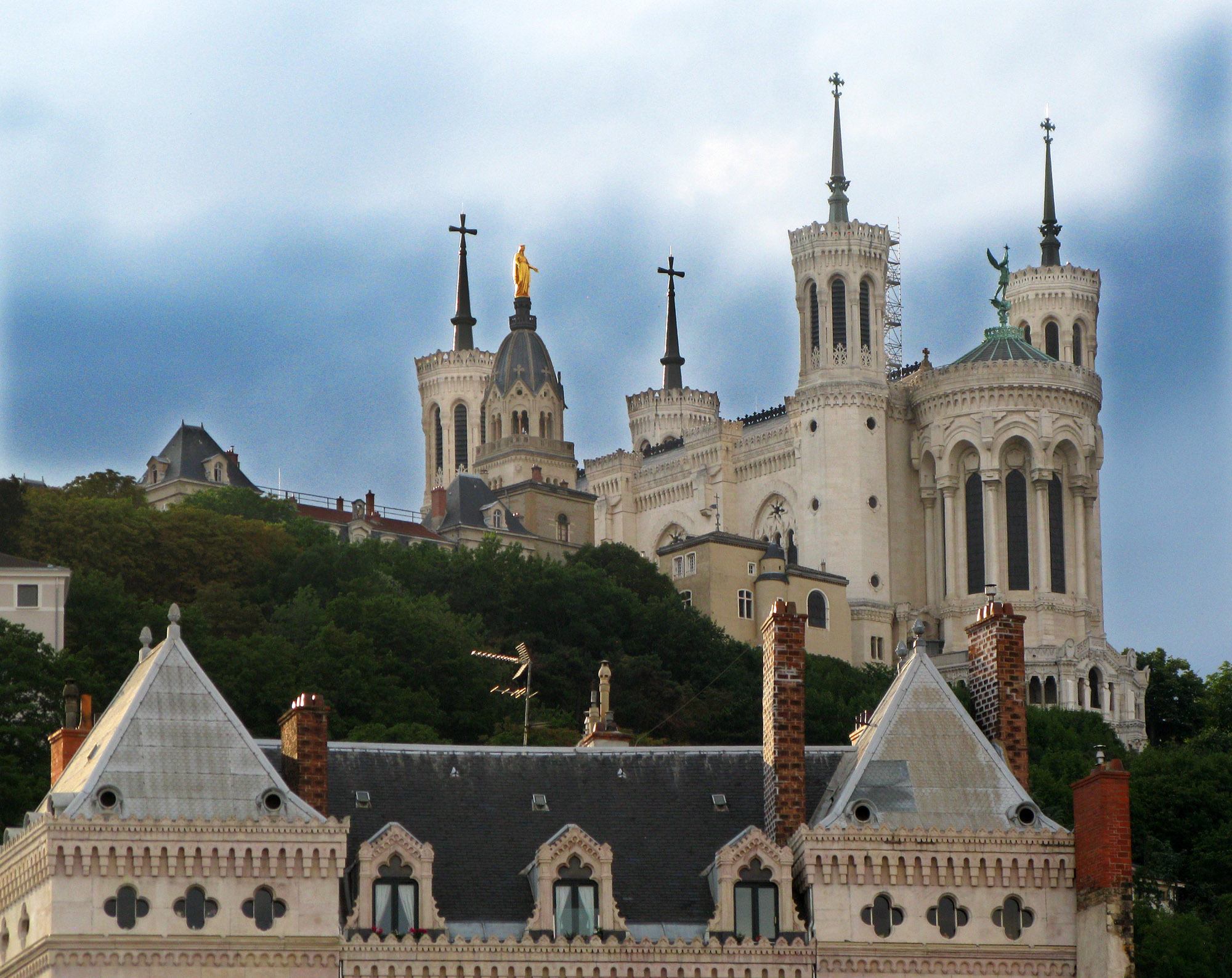|

Notre Dame de Fourviere
The Basilica of Notre-Dame de Fourvière
is a minor basilica in Lyon, France. It was built with private funds
between 1872 and 1884 on a hill overlooking the city. Fourvière
contains two churches. The upper sanctuary is very ornate with a detailed
facade, while the lower with a statue of a lion over its entrance is
simpler. Designed by
Pierre Bossan, it draws from both Romanesque and Byzantine
architecture. It has four main towers, a bell tower topped with a gilded
statue of the Virgin Mary, fine mosaics and stained glass windows.
The basilica's local nickname is "the upside-down elephant". |
|

Notre Dame de Fourviere
The Basilica of Notre-Dame de Fourvière was built
with private funds between 1872 and 1896 atop Fourviere Hill overlooking
the Saone River and the Peninsula to the east. It is said to mark
the triumph of Christian values over the socialists of the Lyon commune,
similarly to the Basilique du Sacré-Cœur in Paris. Designed by
Pierre Bossan, it draws from both Romanesque and Byzantine
architecture. It features fine mosaics, superb stained glass, and a crypt
of Saint Joseph.
|